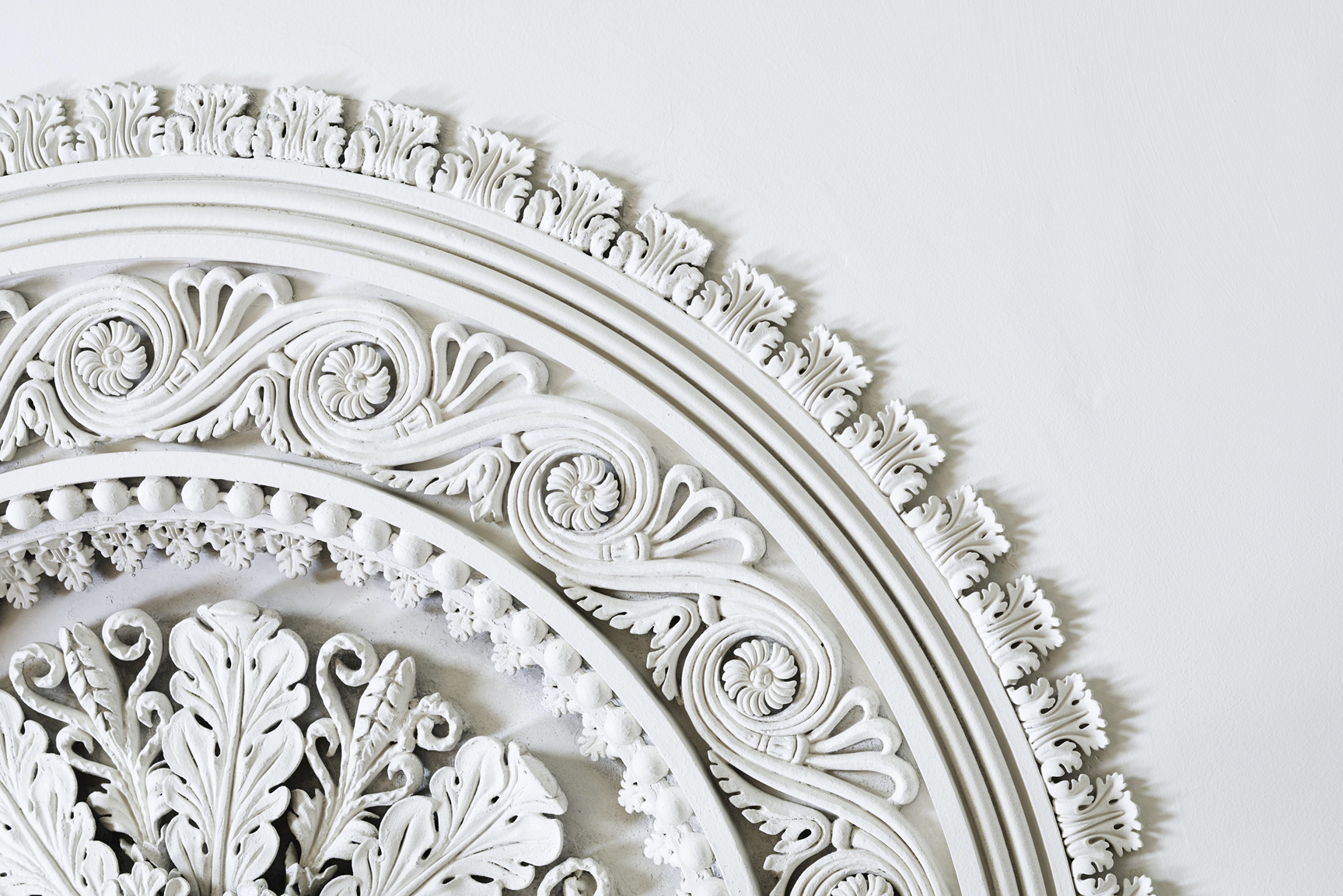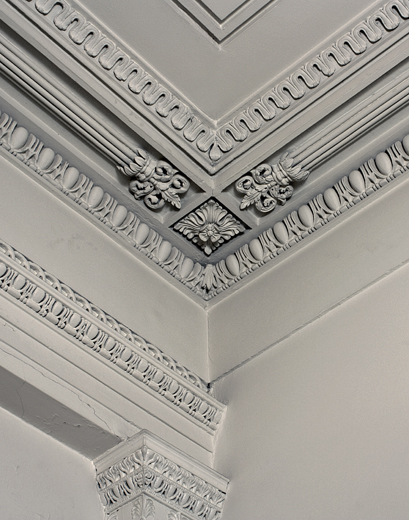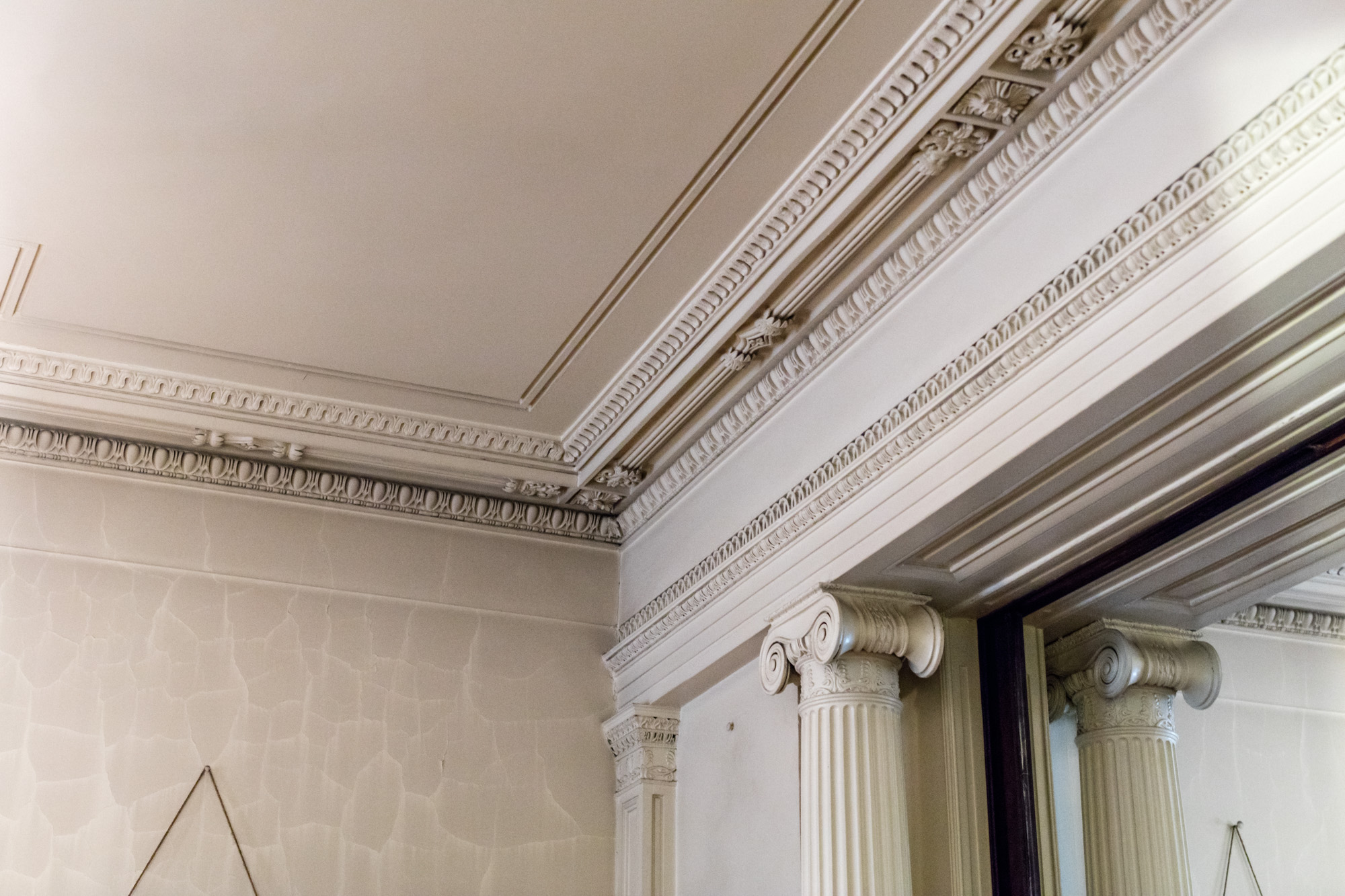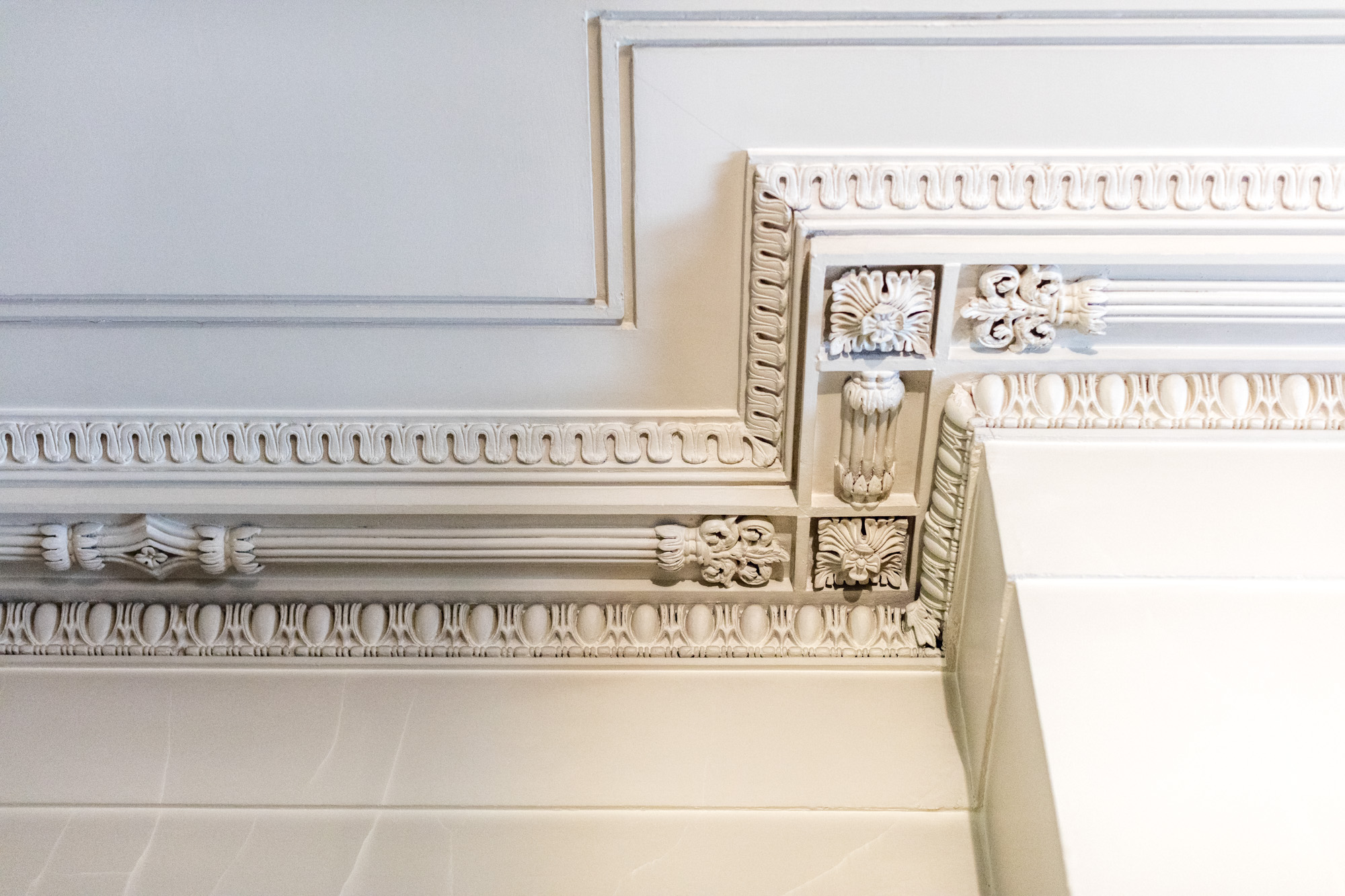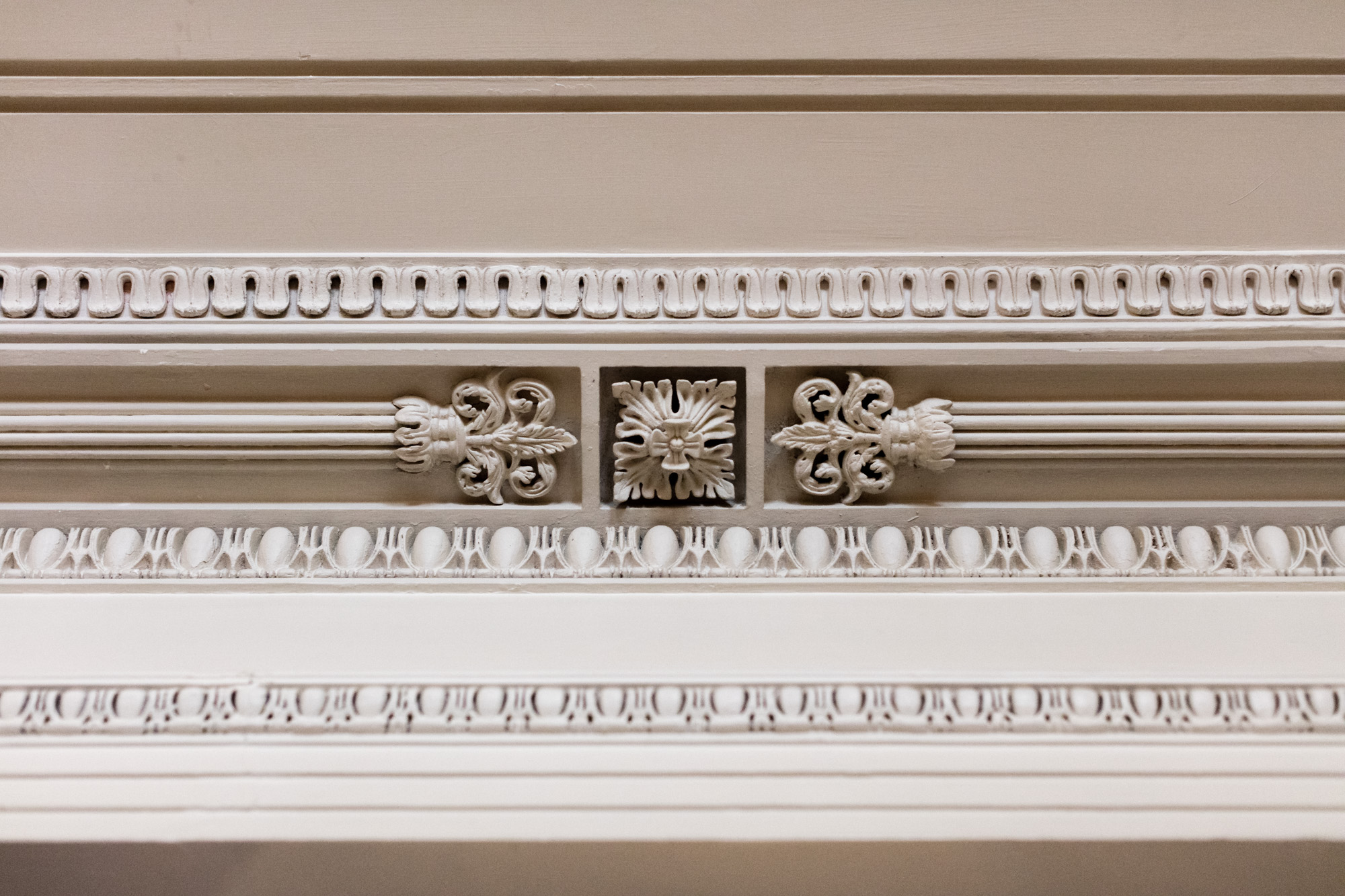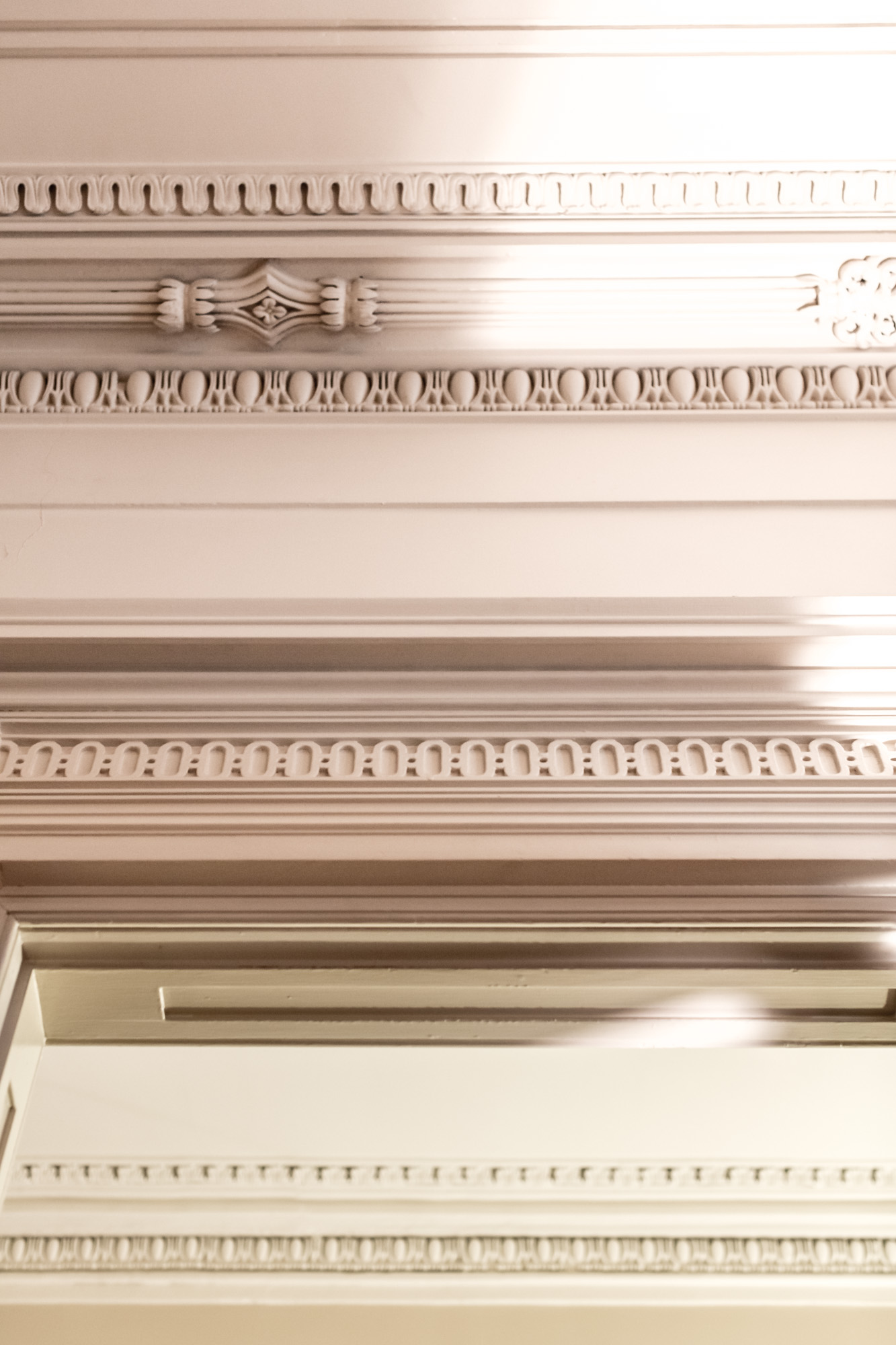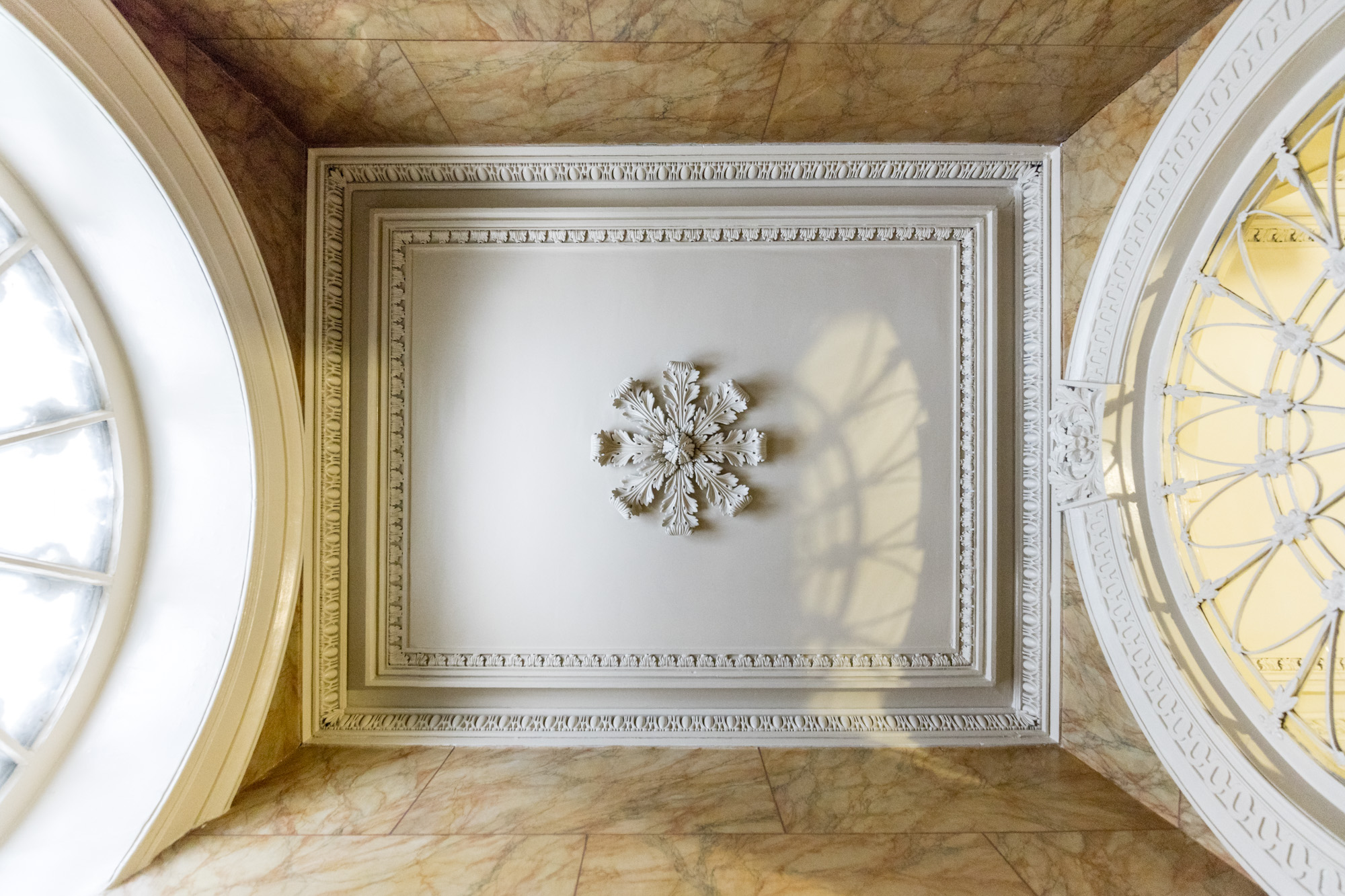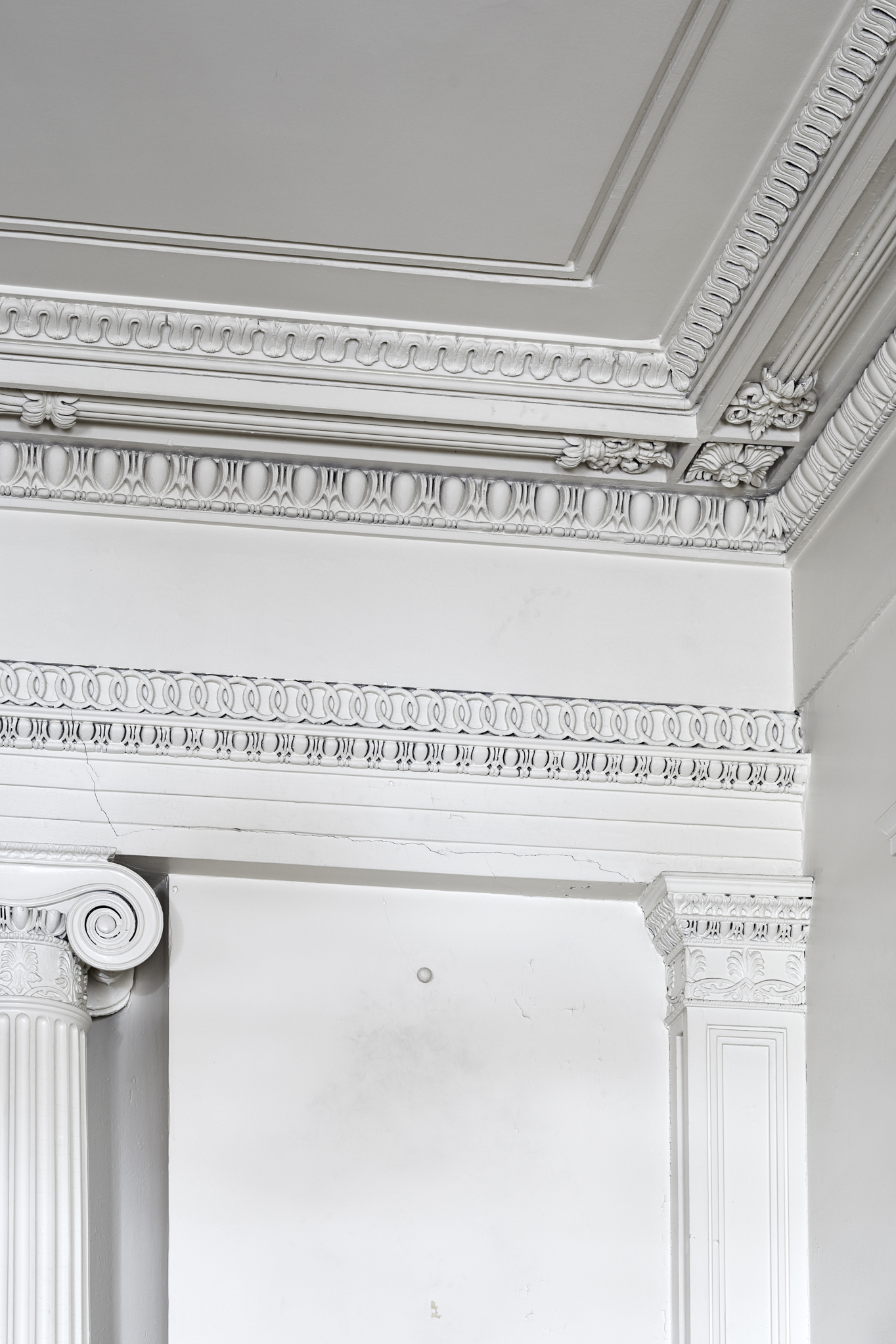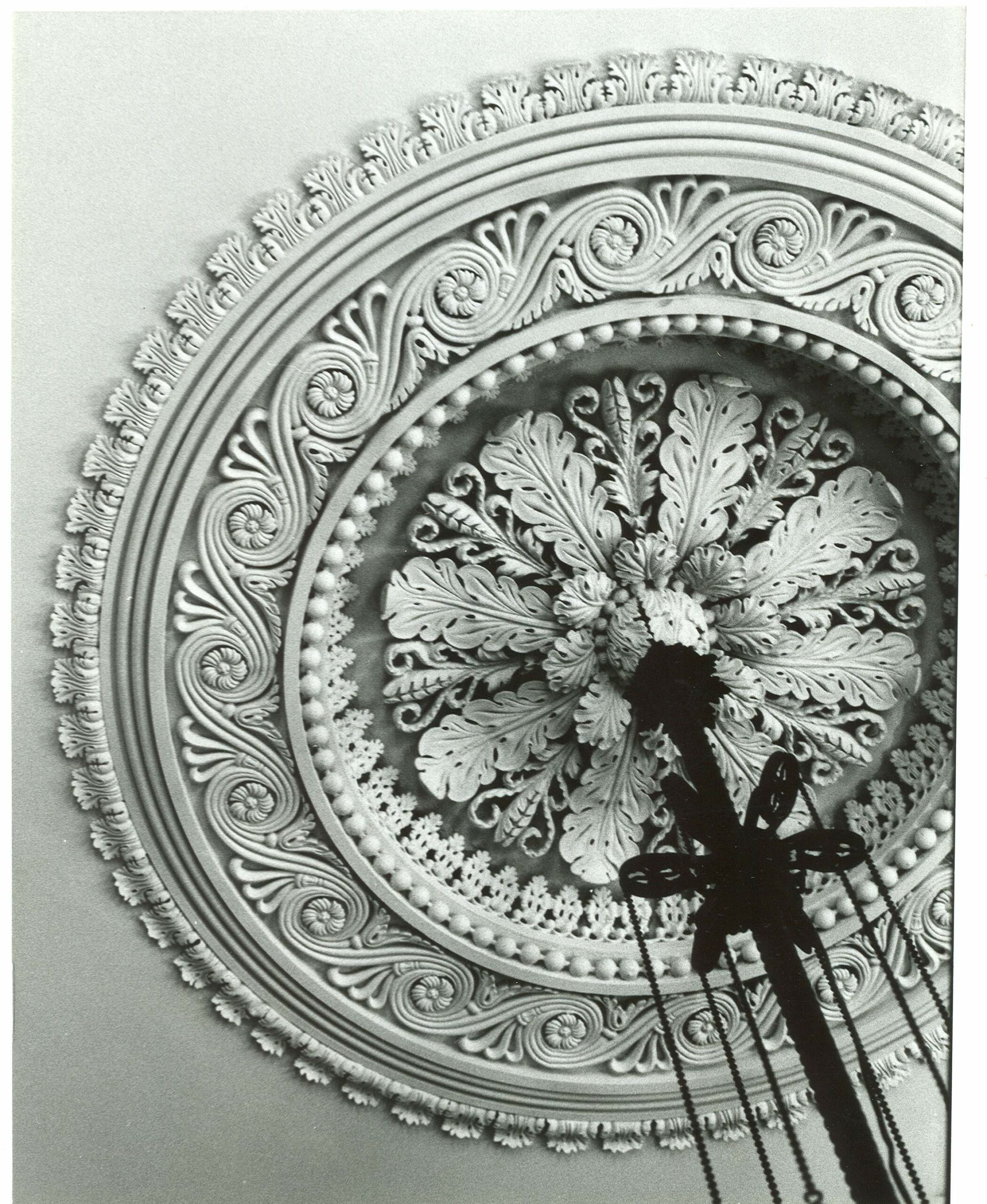Ornamental Plasterwork:
The “Finest Surviving”
The 1832 Merchant’s House is one of only 126 buildings in New York City distinguished as both an exterior and interior landmark. Its intact original ornamental plasterwork is considered the “finest surviving” from the period. Nearly every area of the house boasts exquisite ornamental plasterwork.
The degree of plaster ornament throughout the house varies with the use of the rooms, as public or private spaces. The double parlor and hall on the first floor are the most public spaces, used primarily for entertaining (and impressing) guests; thus, they have the most ornamentation. The bedroom floor is a semi-public space; Eliza Tredwell likely entertained close friends in her bedroom, and both rooms were used as makeshift coat rooms during large parties. The plasterwork is decorative, but less ornate than on the first floor. The ground floor hall and family room, and the children’s bedrooms on the third floor above, are private, family-only spaces, and feature simple ceiling cornices with no applied decoration. The only rooms with no ornamentation are servant spaces (the ground floor kitchen and fourth floor servant bedrooms) – which were never seen by guests, and only rarely by the Tredwells themselves.
